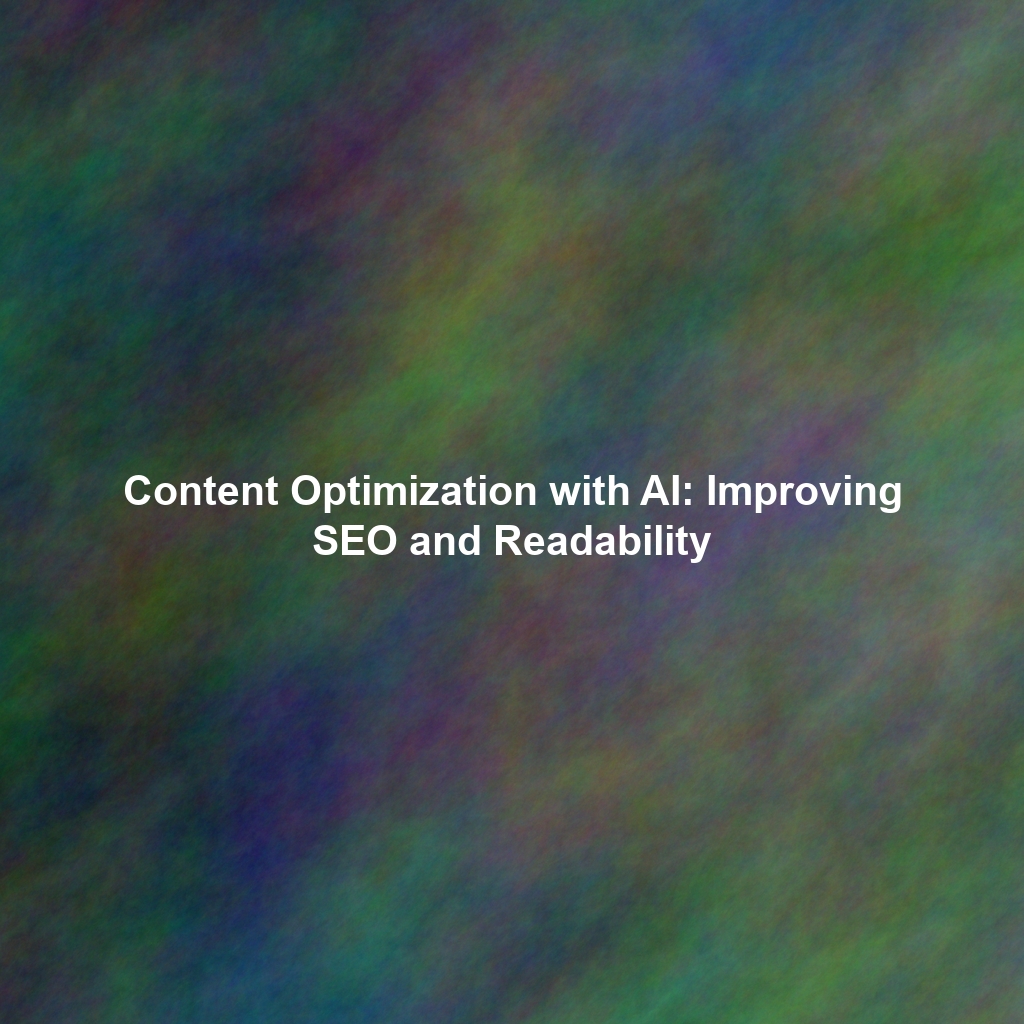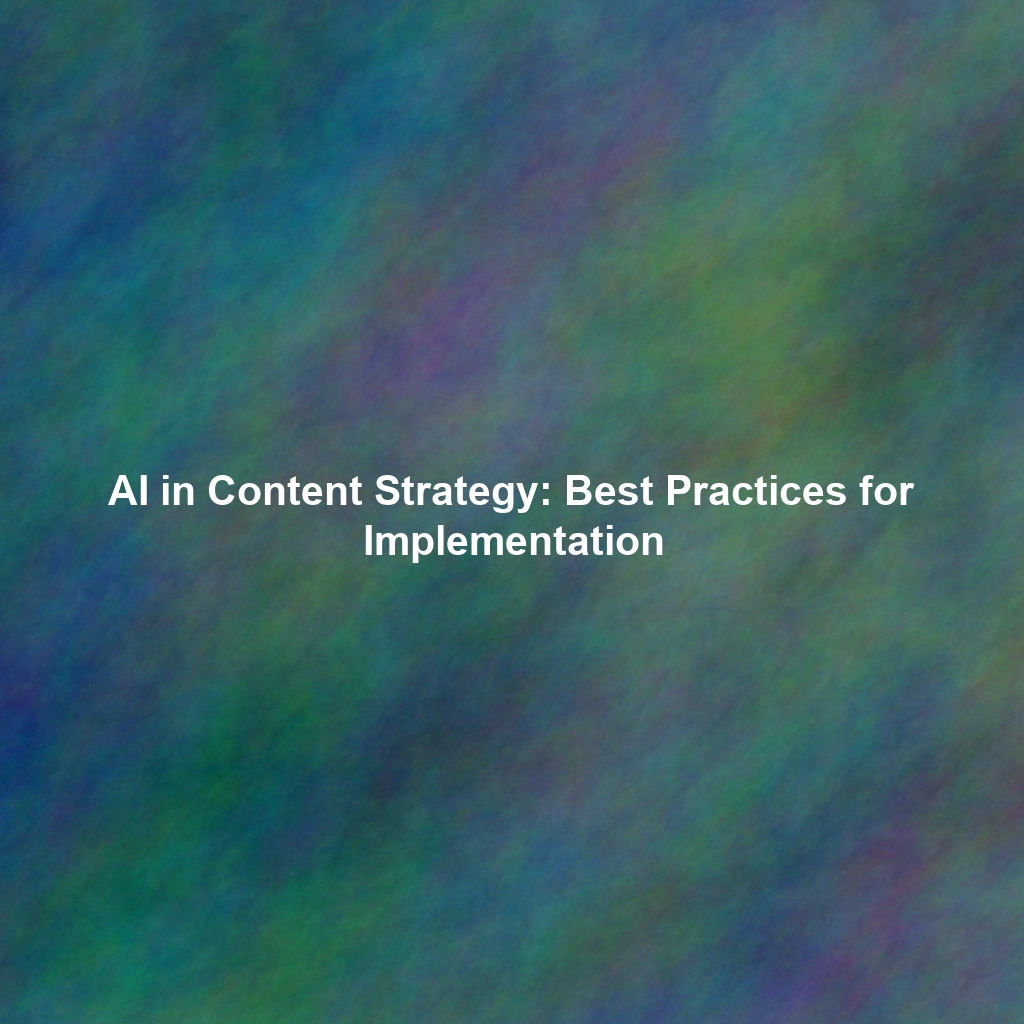Klaviyo stands as a recognized powerhouse for e-commerce marketing automation, empowering brands to build direct, profitable relationships with their customers. At the very heart of its effectiveness lie automated flows – intelligent, pre-designed sequences of emails and other actions. These flows, such as the essential welcome series, highly effective abandoned cart reminders, and crucial post-purchase follow-ups, are meticulously designed to guide customers through their unique journey, nurture relationships at scale, and ultimately drive significant revenue for online businesses. However, simply setting up these flows with default templates isn’t enough to unlock their full, transformative potential. To truly maximize their impact, elevate customer lifetime value, and achieve superior return on investment (ROI), you need to embrace a rigorous approach of A/B testing and continuous data-driven optimization. This article will delve deep into the methodologies for refining your Klaviyo flows, ensuring every automated interaction is a step towards conversion and customer delight.
STRATEGIC IMPERATIVE:
Automated flows are powerful, but only optimized flows deliver peak performance. Continuous testing and data analysis are non-negotiable for maximizing e-commerce revenue.
Understanding the Power of Klaviyo Flows: The Backbone of E-commerce Automation
Klaviyo flows are far more than just simple automated email sequences. They are dynamic, intelligent, and highly personalized customer journeys meticulously designed to engage subscribers and customers at precisely the right time with the most relevant message. Each flow is triggered by a specific event (e.g., a new sign-up, an abandoned cart, a purchase) and then guides the customer through a predefined, yet adaptable, series of communications. Understanding the strategic purpose of common flow types is the first step towards effective optimization:
- Welcome Series: The Crucial First Impression: This foundational flow introduces new subscribers to your brand, shares your unique value proposition, and gently encourages their very first purchase. An effective welcome series builds immediate rapport and sets the stage for future engagement. Learn more about welcome series best practices from Klaviyo.
- Abandoned Cart Flow: The Revenue Recovery Engine: This highly effective flow is triggered when a customer adds items to their shopping cart but doesn’t complete the purchase. Its primary goal is to recover lost sales by reminding customers about their left-behind items and providing incentives to complete their order. This flow often has the highest ROI among all automated emails.
- Post-Purchase Flow: Fostering Loyalty and Repeat Business: Sent to customers after they make an order, this flow serves multiple purposes: thanking them for their purchase, providing essential shipping updates, offering product care tips, and crucially, encouraging repeat purchases through relevant recommendations or loyalty program invitations.
- Browse Abandonment Flow: Capturing Interest Before It Fades: This flow targets customers who viewed specific products or categories on your website but did not add anything to their cart. It’s designed to re-engage their interest by reminding them of the products they browsed and potentially offering a gentle nudge or relevant content.
- Winback Flows: Re-engaging Lapsed Customers: Designed to bring back inactive or “lapsed” customers who haven’t made a purchase or engaged with your brand in a while. These flows often include compelling offers, highlight new products, or seek feedback to understand why they disengaged.
- Customer Anniversary/Birthday Flows: Personal Touches: Triggered on a customer’s birthday or the anniversary of their first purchase/sign-up. These personalized messages build goodwill and often include special discounts or gifts, fostering deeper emotional connections.
Identifying Bottlenecks in Your Klaviyo Flows: The Diagnostic Phase
Before you embark on any A/B testing or optimization efforts, it’s absolutely crucial to first identify where your existing flows are underperforming. This involves a systematic, data-driven analysis of key metrics within Klaviyo’s intuitive analytics dashboard. Think of this as a diagnostic phase, pinpointing the precise areas of friction or inefficiency within your customer journeys. Look for:
- Open Rates: The First Hurdle: A low open rate (the percentage of recipients who open your emails) is a strong indicator of issues with your subject lines (are they compelling enough?), preheader text, or sender reputation. If emails aren’t opened, their content can’t convert. Benchmark against industry averages for your sector.
- Click-Through Rates (CTR): Measuring Engagement: A low CTR (the percentage of recipients who click on a link within your email) suggests that your email content isn’t compelling, relevant, or persuasive enough. This could point to weak calls-to-action (CTAs), uninteresting visuals, or content that doesn’t resonate with the segment receiving it.
- Conversion Rates: The Ultimate Goal: If your open rates and CTRs are healthy but conversion rates (the percentage of recipients who complete the desired action, like a purchase) are low, it means that even if people are clicking, they’re not buying. This could indicate problems beyond the email itself, such as issues with your landing page experience, the offer’s perceived value, or overall customer experience post-click.
- Unsubscribe Rates: A Signal of Disconnect: Consistently high unsubscribe rates indicate that your emails are not resonating with your audience, are being sent too frequently, or are perceived as irrelevant or intrusive. This is a critical metric for understanding audience fatigue or content misalignment.
- Flow Conversion Rates & Revenue Per Recipient: This shows the overall end-to-end performance of the entire flow – how many people enter the flow versus how many ultimately complete the desired action (e.g., make a purchase). Klaviyo’s “Flow Performance” reports provide this holistic view, along with “Revenue Per Recipient,” which is a key indicator of the flow’s direct financial impact.
- Drop-off Points within the Flow: Analyze the “Flow Analytics” view to see where subscribers are dropping out of the sequence. Are they exiting after the first email, or a later one? This pinpoints specific emails or delays that might be causing disengagement.
By carefully examining these metrics, you can precisely pinpoint the specific areas within your flows that require immediate optimization, ensuring your A/B testing efforts are focused on the highest-impact opportunities.
A/B Testing Strategies for Klaviyo Flows: Experimentation for Excellence
A/B testing, also known as split testing, is a powerful, systematic technique that allows you to compare different versions of your emails or flow settings to empirically determine which performs better against your defined KPIs. Klaviyo’s built-in A/B testing functionality makes this process straightforward. Here’s a strategic approach to A/B testing in Klaviyo, ensuring your experiments yield actionable insights:
1. Subject Line Optimization: The Gateway to Engagement
The subject line is the very first thing a subscriber sees in their inbox, making it absolutely crucial for grabbing attention and compelling an open. It’s your first, and often only, chance to make an impression. Test different subject lines that focus on various psychological triggers, such as urgency, curiosity, personalization, or direct benefit. Examples to test:
- Urgency/Scarcity: “Your Cart is Waiting! Complete Your Order Now Before It’s Gone.” vs. “Don’t Miss Out! Your Items are Almost Gone.”
- Personalization: “Nick, Your Order Is On Its Way!” vs. “Good News About Your Recent Purchase!”
- Curiosity: “A Little Something We Noticed…” vs. “Your Next Favorite Product Awaits.”
- Benefit-Oriented: “Save 15% on Your Next Order!” vs. “Unlock Exclusive Savings Today!”
- Emoji Usage: Test subject lines with and without relevant emojis to see if they increase visibility and open rates for your audience.
Track open rates as your primary KPI to determine which subject line resonates best and compels more subscribers to click. Remember to test one variable at a time for clear results.
2. Email Copy and Content: Driving the Message Home
Once an email is opened, the copy and content are responsible for engaging the reader and driving action. Experiment with different writing styles, tone, visual layouts, and calls-to-action to see which elements motivate subscribers most effectively. Test:
- Different Value Propositions: Highlight different benefits of your product or service. For an abandoned cart, test emphasizing “convenience” in one version vs. “problem-solving” in another.
- Varying Image Styles: Test the impact of product-focused photos versus lifestyle shots, or static images versus animated GIFs. Visuals play a huge role in engagement.
- Call-to-Action (CTA) Placement and Wording: Experiment with different button colors, sizes, and text (e.g., “Shop Now” vs. “Complete My Order” vs. “Discover More”). Test placing CTAs at the top, middle, or bottom of the email.
- Email Length & Format: Test short, punchy emails versus longer, more detailed versions. Experiment with different layouts (e.g., single column vs. multi-column, text-heavy vs. image-heavy).
- Personalization Depth: Beyond just names, test dynamically inserting product names, categories browsed, or even specific recommendations based on past behavior.
Track Click-Through Rates (CTR) and Conversion Rates to determine which content variations are most effective at driving desired actions.
3. Offer Testing: The Incentive to Convert
For flows designed to drive purchases (like abandoned cart or winback flows), the offer is often the most powerful lever. Test different incentives to see which motivates customers to convert without eroding your profit margins. Consider:
- Percentage Discounts: Test different discount percentages (e.g., 10% off vs. 15% off vs. 20% off).
- Free Shipping: Offer free shipping on all orders, or on orders over a certain amount. This is often a powerful motivator.
- Free Gift with Purchase: Include a complimentary item with their order to add perceived value.
- Tiered Offers: Offer a higher discount for a larger purchase (e.g., “10% off $50, 20% off $100”).
- Exclusivity: Offer an exclusive product or early access to a sale.
Monitor Conversion Rates and Revenue Per Recipient to assess the profitability and effectiveness of each offer. Remember to factor in the cost of the discount when evaluating ROI.
4. Timing and Frequency: The Rhythm of Communication
The timing and frequency of your emails within a flow can significantly impact performance. Experiment with the delays between emails to find the optimal send times that maximize engagement without overwhelming your subscribers. For example:
- Abandoned Cart Flow Timing: Test sending the first abandoned cart email after 1 hour vs. 3 hours vs. 6 hours. Then test the second email after 24 hours vs. 48 hours.
- Welcome Series Delays: Experiment with the delay between the welcome email and the second email in the series (e.g., 1 day vs. 2 days).
- Number of Emails in a Flow: For some flows, test sending a single email versus a series of two or three emails to see if more touchpoints improve conversion without increasing unsubscribe rates.
- Specific Time of Day: Test sending emails at different times of day (e.g., morning vs. afternoon vs. evening) to align with when your audience is most active.
Monitor Open Rates, CTRs, Conversion Rates, and Unsubscribe Rates to find the sweet spot for your audience. There’s no universal best time; it’s unique to your customer base.
Leveraging Klaviyo’s Reporting Features: Your Optimization Command Center
Klaviyo provides a robust suite of reporting features that serve as your command center for tracking the performance of your flows and A/B tests. These analytics are designed to give you deep, actionable insights into customer behavior and campaign effectiveness. Make it a habit to regularly dive into these reports to inform your optimization strategies:
- Monitor Key Performance Indicators (KPIs) at a Glance: The main dashboard and individual flow reports provide crucial KPIs like open rates, click-through rates, conversion rates, and revenue per recipient. Track these consistently to get a high-level overview of performance and identify immediate areas of concern.
- Analyze A/B Test Results with Precision: Klaviyo’s A/B test reports clearly show which variation performed better for your chosen primary metric. This allows you to confidently implement the winning strategy across your flows, scaling what works. Pay attention to statistical significance to ensure results aren’t due to chance.
- Identify Trends and Patterns Over Time: Use historical data within Klaviyo’s reports to understand how customer behavior changes over time, across seasons, or in response to external factors. This helps you anticipate needs and adjust your flows proactively (e.g., preparing for holiday shopping spikes).
- Segment Your Audience for Deeper Insights: Klaviyo’s segmentation capabilities are powerful. Use them in conjunction with reporting to understand how different customer segments (e.g., high-value customers, first-time buyers, product-specific segments) interact with your flows. This often reveals opportunities to create even more targeted and effective flows for specific groups.
- Flow Analytics & Drop-off Rates: Dive into the visual “Flow Analytics” to see the exact path subscribers take and, critically, where they drop off within a multi-step flow. This visual representation pinpoints specific emails or delays that might be causing disengagement, guiding your optimization efforts precisely.
- Attribution & Revenue Tracking: Understand how much revenue each flow is directly generating. Klaviyo’s robust attribution models help you see the direct financial impact of your automated efforts, justifying your investment and guiding future strategy.
By consistently leveraging these reporting features, you transform raw data into actionable intelligence, allowing you to make informed decisions that continuously improve your flow performance and drive e-commerce growth.
Data-Driven Decision Making: The Non-Negotiable Key to Success
The most important, overarching aspect of Klaviyo flow optimization is the unwavering commitment to making data-driven decisions. In the complex world of e-commerce marketing, relying on gut feelings, assumptions, or anecdotal evidence is a recipe for mediocrity and wasted resources. Instead, you must systematically use the rich data you collect from A/B tests, Klaviyo’s detailed reports, and broader customer analytics to inform every strategic adjustment and continuous improvement effort for your flows. This iterative process is what separates average performance from exceptional results.
For example, if your data clearly shows that a particular segment of your audience (e.g., customers who have purchased once but not again) responds exceptionally well to a specific type of offer (e.g., free shipping on their next order), then the data-driven decision is to create a separate, dedicated flow tailored specifically to that segment and offer. This level of precision ensures maximum relevance and conversion efficiency. Similarly, if an A/B test reveals that a certain subject line consistently yields a significantly higher open rate, that winning subject line should be implemented across all relevant emails within the flow. The data provides the objective truth, guiding your path to optimal performance. This continuous loop of testing, analyzing, and adapting is the engine of sustainable e-commerce growth.
Conclusion: Embrace Continuous Optimization for E-commerce Mastery
Optimizing Klaviyo flows through rigorous A/B testing and meticulous data analysis is not a one-time task; it is an ongoing, dynamic process that is absolutely essential for sustained e-commerce success. By continually testing different variables, analyzing performance metrics with precision, and refining your flows based on actionable insights, you can significantly increase customer engagement, drive substantially more revenue, and build stronger, more enduring relationships with your valuable customer base. This proactive, data-driven approach transforms your automated emails from simple messages into powerful, intelligent engines for growth.
Don’t just “set it and forget it” when it comes to your Klaviyo flows. Actively manage, analyze, and continuously improve them. Embrace the iterative nature of optimization, and your Klaviyo flows will become an unparalleled asset, a powerful engine driving your e-commerce success and securing your competitive advantage in the digital marketplace.
 Skip to content
Skip to content

